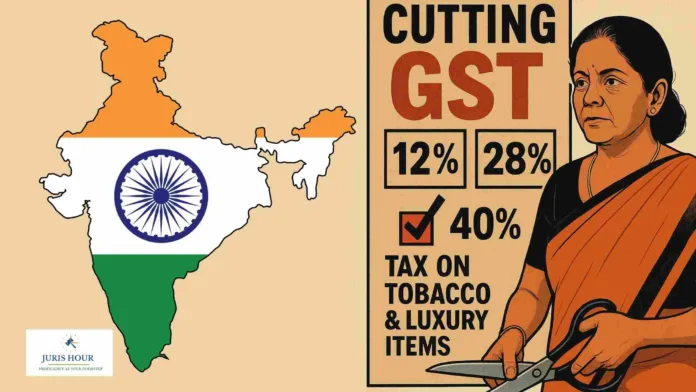Nearly eight years after the rollout of Goods and Services Tax (GST), the Centre is preparing for its most significant restructuring yet. A new blueprint for GST 2.0 proposes to do away with the existing 12% and 28% tax slabs, aiming to simplify the tax regime and reduce disputes. The plan will be reviewed by a group of state finance ministers next week before being placed before the GST Council.
Under the proposal, a 5% slab will remain for essential goods, while most items from the 12% category are likely to be moved to either the nil or 5% bracket. Goods currently taxed at 28%—such as air conditioners, dishwashers, automobiles, cement, and select categories of TV sets—will be shifted to the 18% slab, except for sin and luxury goods, which will attract a special levy of up to 40%.
Officials said that food products, medicines, medical devices, stationery, and daily essentials would either become tax-free or be taxed at the lowest rate. Items typically consumed by the middle class, including electronics like refrigerators and high-end TVs, will continue under the 18% slab. However, special rates—such as 0.25% on diamonds and precious stones and 3% on jewellery—will remain to support specific industries.
The revamp comes ahead of the March deadline, when the compensation cess to states is set to expire. By eliminating the 12% and 28% slabs, the government expects to make the tax structure less complex and improve compliance.
What Will Change for Consumers
- Items like jams, fruit juices, namkeens, medicines, spectacles, and notebooks (currently under 12%) will likely see tax relief.
- High-value consumer durables and cement (currently under 28%) will move to 18%.
- Sin goods such as tobacco, pan masala, and aerated drinks will face a 40% GST plus cess.
Impact on Revenue and Industry
At present, 65% of GST revenue comes from the 18% slab, while the 28% category contributes about 12%. The shift is expected to balance revenue without burdening consumers. Sources indicate that the weighted average GST rate, currently 11.6%, may fall further.
Experts believe this restructuring will resolve long-pending disputes over classification of products like parathas, cakes, and sweets, which often faced confusion due to varying ingredients.
A senior official said, “This will be a modern, streamlined GST. Almost all items now taxed at 12% and 28% will move to 5% or 18%, making compliance simpler and reducing litigation.”

